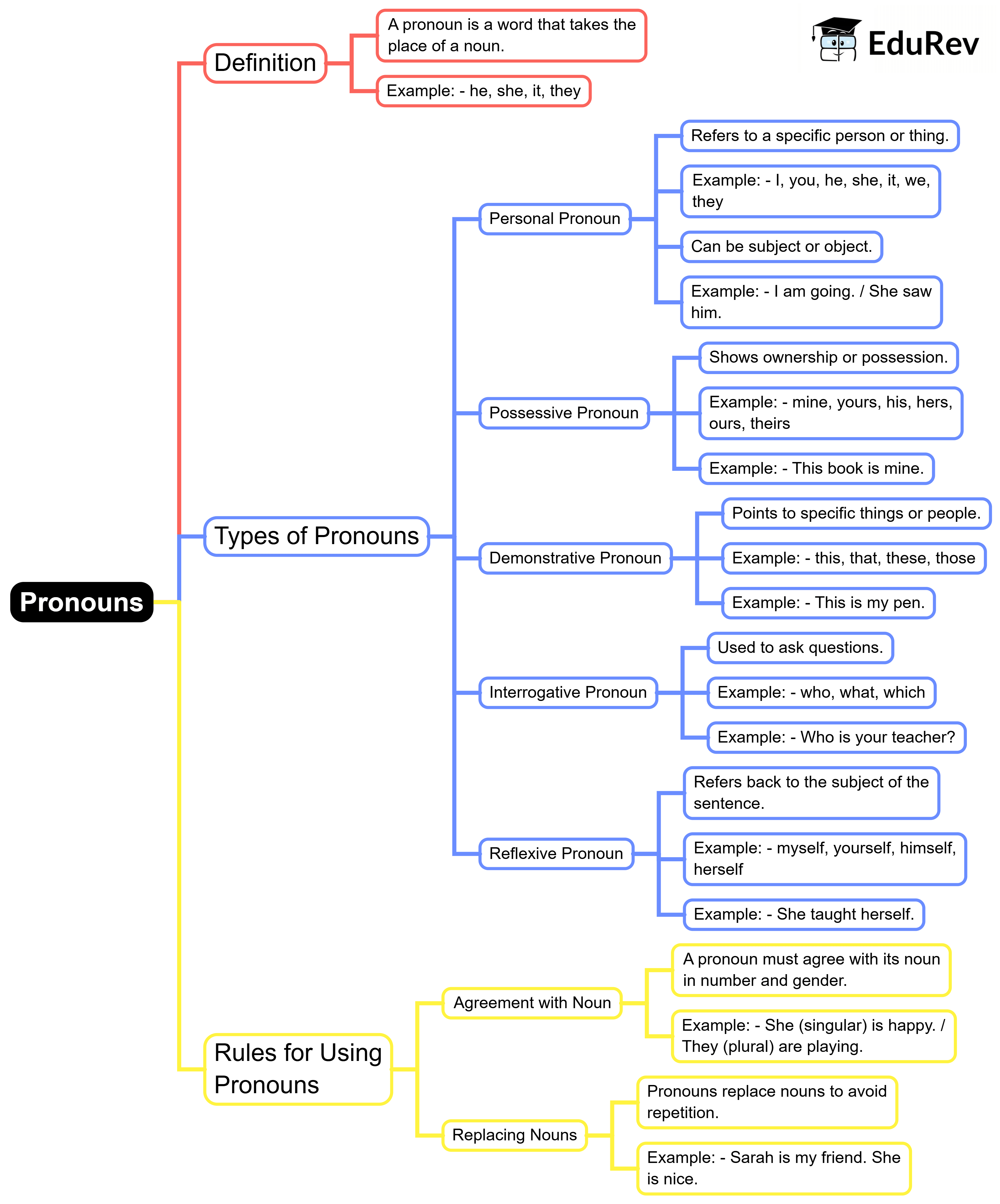Class 6 Exam > Class 6 Notes > English Grammar for Class 6 > Mind Map: Pronouns
Mind Map: Pronouns | English Grammar for Class 6 PDF Download

The document Mind Map: Pronouns | English Grammar for Class 6 is a part of the Class 6 Course English Grammar for Class 6.
All you need of Class 6 at this link: Class 6
|
49 videos|349 docs|46 tests
|
FAQs on Mind Map: Pronouns - English Grammar for Class 6
| 1. What are pronouns and why are they important in English grammar? |  |
Ans. Pronouns are words that replace nouns in a sentence, making communication smoother and less repetitive. They are important because they help to avoid redundancy and clarify who or what we are talking about, thus enhancing the overall flow of writing and speech.
| 2. What are the different types of pronouns in English? |  |
Ans. There are several types of pronouns in English, including personal pronouns (e.g., he, she, it), possessive pronouns (e.g., his, hers), reflexive pronouns (e.g., myself, themselves), demonstrative pronouns (e.g., this, those), interrogative pronouns (e.g., who, what), and relative pronouns (e.g., which, that). Each type serves a specific function in a sentence.
| 3. How do you use pronouns correctly in sentences? |  |
Ans. To use pronouns correctly, ensure that they agree in number and gender with the nouns they replace. For instance, use "he" or "she" for singular male or female nouns, respectively, and "they" for plural nouns. Additionally, place pronouns in a way that clearly indicates to whom or what they refer.
| 4. What common mistakes do people make with pronouns? |  |
Ans. Common mistakes include using the wrong pronoun case (e.g., saying "Him went to the store" instead of "He went to the store"), mismatching pronouns with their antecedents (e.g., using "she" for a male noun), and being unclear about what a pronoun refers to, which can confuse the reader.
| 5. How can I improve my understanding and use of pronouns? |  |
Ans. To improve your understanding and use of pronouns, practice identifying the nouns in your sentences and substituting them with appropriate pronouns. Additionally, reading extensively can help you see how different pronouns are used in context, and engaging in exercises or quizzes focused on pronouns can reinforce your learning.
Related Searches





















